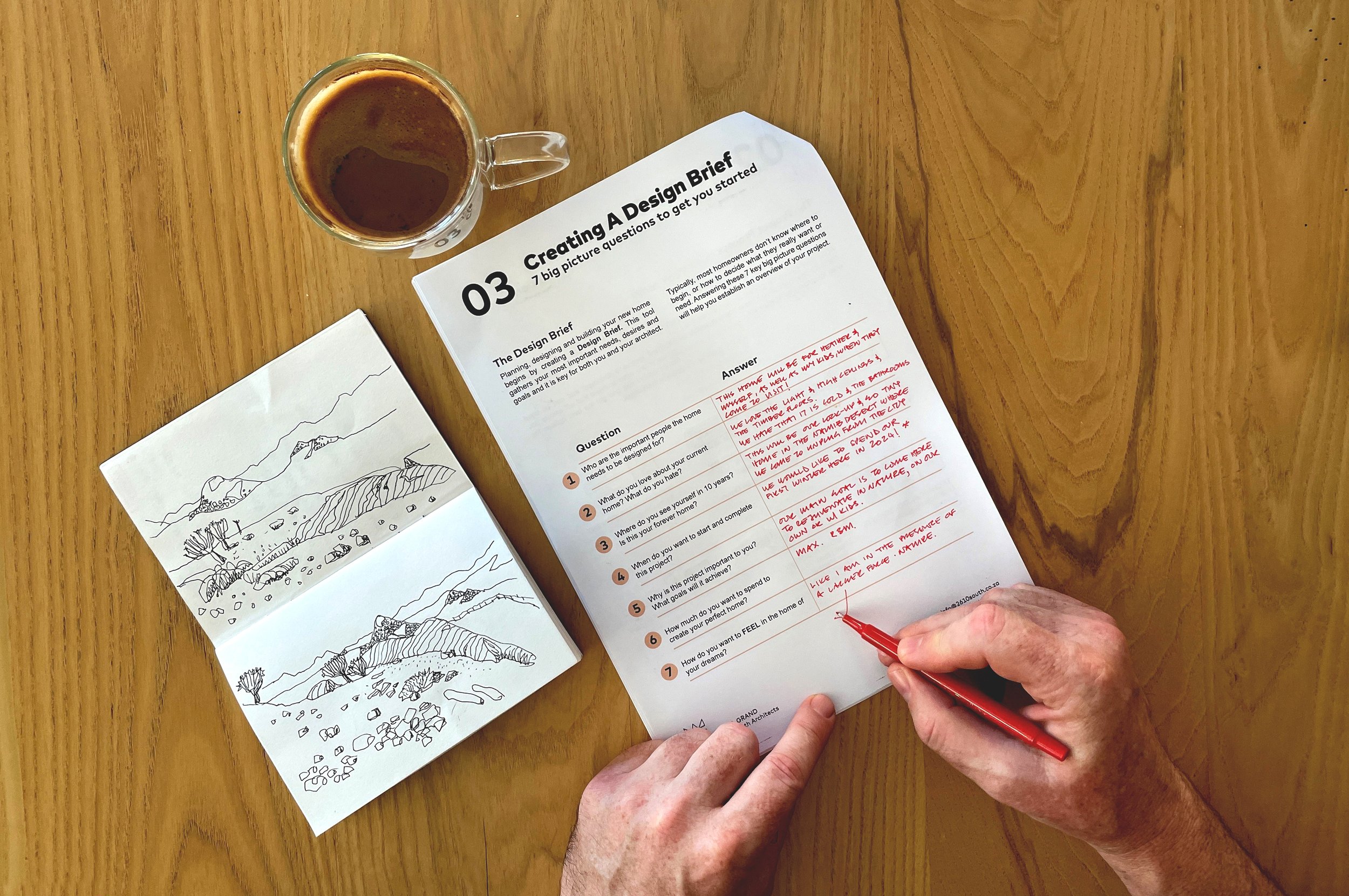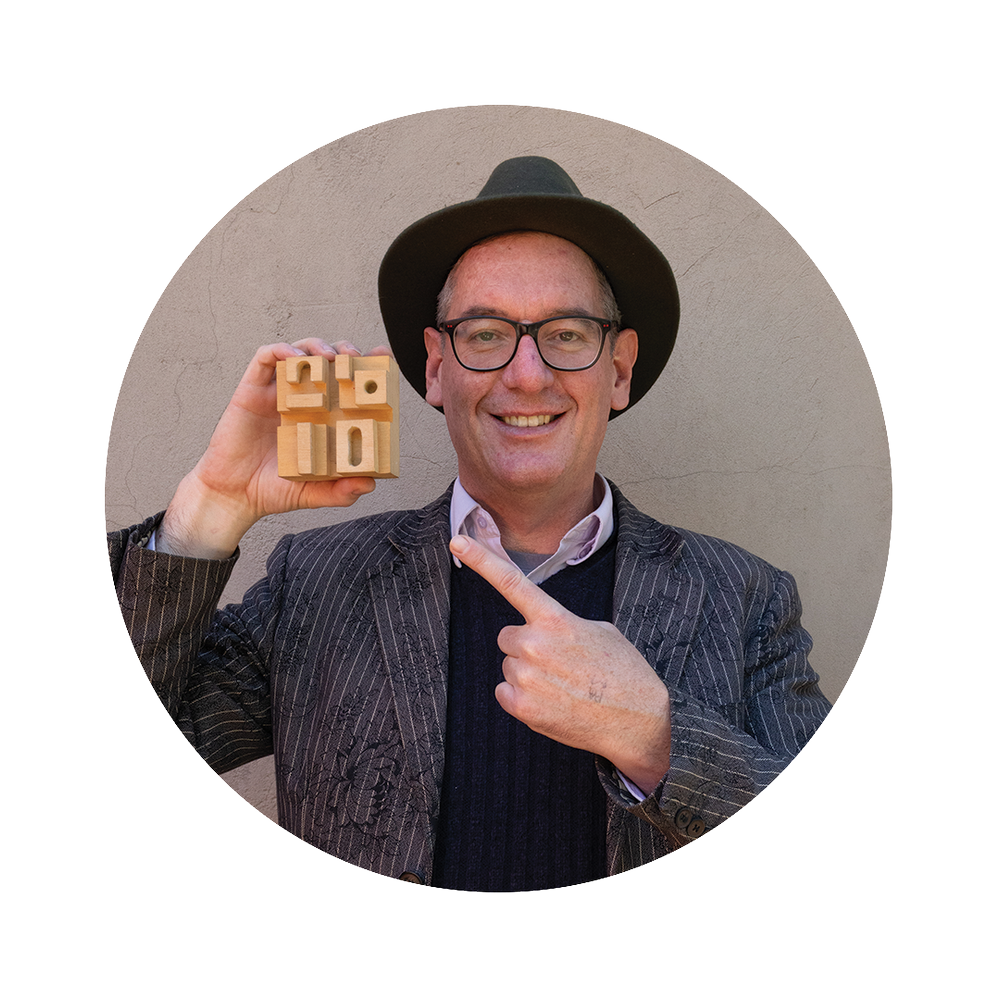7 Big Picture Questions to Get You Started on Your Design and Building Journey
Mindful Design #03
In last month’s newsletter, I outlined the first step to take before designing your home. An important part of this first step is to create a design brief that gathers your most important needs, desires, and goals. The design brief is the key for both you and your architect to produce a successful project. But finding out what you really want and need is not always that straightforward. Each of us is made up of a unique mosaic of ideas, past experiences, and impressions, and it is important to sort through these pieces to understand and communicate what you value.
If this is not done, then the built outcome might be logical but still provide the wrong answer for you.
As part of the Mindful Design Approach we take extra care to understand our clients’ deeper needs and desires. We use this understanding to develop a clear concept, which guides the thousands of decisions that need to be made during the design process.
Here’s an example: Our client for a small, private resort briefed us on the number of units, sizes, and functions he envisaged. Upon some prompting, he got back to his core motivation for doing this project. The energy in the room changed when he described how he wanted to feel: “a million miles away from the city, to completely unplug, take in nature and share this experience with those I love”. With his core intent known, it became easy to challenge certain assumptions, like the civil engineer’s over-designed driveway. Turning the straight driveway into a two-spoor track winding through the bush, meant our client can now feel like he is leaving the city behind him the moment he turns off the main road. This decision also saved our client R800 000.
Our Mindful Design Approach helps uncover the emotional need that lies at the center of a project and to create a spatial experience that meets this need.
The 7 questions below are designed to get you thinking a bit deeper about your project.
1. Who are the important people the home needs to be designed for?
2. What do you love about your current home? What do you hate?
3. Where do you see yourself in 10 years? Is this your forever home?
4. When do you want to start and complete this project?
5. Why is this project important to you? What goals will it achieve?
6. How much do you want to spend to create your perfect home?
7. How do you want to FEEL in the home of your dreams?
Unsure of the next step? No worries, we're here to help! We created the Project Planning Pack, a simple and effective process that helps you diagnose your project and equips you with the tools you need to get started. Designed with the idea that successful planning is key to achieving a successful project outcome, the Pack aims to help you reduce risk and improve your chances of success. You can find the project planning pack here.
From the sketchbook:
Sketch by Thorsten Deckler
When Frank Lloyd Wright was asked to design the Guggenheim Museum in New York in 1943, he was asked to create a museum that was “unlike any other museum in the world.” The museum is world-famous and attracts millions of visitors from all over the globe. I have visited the museum myself several times, but it was only on a recent trip that I tried to draw it, and understood what makes this building so compelling and unique. It is not only the art, but the fact that there are no stacked floors, just one continuous plane winding upwards. You always know where you are in this building and that makes you feel in control. You can manage the ‘museum fatigue’, so common to big institutions, by taking a break and looking into the central void from where you see other people doing the same thing – looking at art, looking at others, being seen. This lends a powerful sense of connection and belonging, something we all strive for as humans.
Mindful Design Movement
My mission is to create a more beautiful world, one building at a time. With proper planning and better insight, this is possible. There are so many examples of great buildings, some designed by architects, some made by ordinary people, that we can learn from.
Thorsten Decker helps people create homes and residential developments that prioritize human well-being by employing the Mindful Design Approach. He uses his unique style of hand drawing, alongside digital modelling, to guide clients and project team throughout the design and construction process.
The work of 26’10 south architects can be viewed on this website.
All drawings and diagrams in this article are by Thorsten Deckler. More drawings can be viewed on Thorsten’s Instagram page @thethinking_hand.



